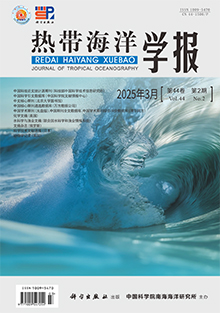Using the Regional Ocean Modeling System (ROMS) product and Archiving Validation and Interpolation of Satellite Oceanographic Data (AVISO) satellite altimeter data,we revealed some characteristics of one Dongsha Cold Eddy (DCE) during autumn 2000. This DCE survived 36 days, from September 4 to October 11. The average radius of the DCE was 77 km, travel distance was about 487 km, mean moving speed from model output was 15 cm·s-1; eddy moving direction indicated it interacted with topography during its life time, and moved along the continental slope at depth of 1000-2000 m. The winter monsoon contributed to eddy’s direction change as well. The deformation of the DCE’s shape was related to the effect. The trend was to lead its shape to become an ellipse, with the long axis located along the northeast to southwest direction. Furthermore, analysis of eddy radius, vorticity, energy density (EI), shear deformation rate (SHD), the stretching deformation rate (STD), and the divergence was carried out. The average vorticity was 3.997×10-6s-1, and the mean EI was 2.42×10-2cm2·s-2·km-2. The vorticity was positively correlated with radius, while the energy was negatively correlated with radius. The averaged shear deformation, stretching deformation rate, and divergence were 1.801×10-6s-1, 4.612×10-7s-1, and 3.269×10-8s-1, respectively. We applied three-dimensional eddy detection method to ROMS model output. There were two types of three-dimensional structures of this DCE during its lifetime. During generation, the DCE was lens-shaped and had the largest radius in the stratified layer; when it matured, the shape was like a bowl and had the largest radius at the surface; during the termination, it could only be detected at the surface. In most occasions, the DCE could reach 50 m or less, but sometimes it could reach 450 m. Finally, we also analyzed vertical distributions of velocity, temperature, and salinity. It shows that the range of tangential velocity is from -40 to 50cm·s-1, its velocity core was located at the depth no more than 100m, and the velocity decreased sharply at 100-200 m. There was a low temperature dome between the depth of 60 and 100m, where the DCE caused 10-20m rise of the 22℃ isotherm. Similarly, there was also a high salinity dome at 100-150m, with salinity greater than 34.6‰.




